Facilitating Children’s Creative Development
| Elements found within the young child’s intellectual development:- | Influences on the child’s creative activity:- |
| Accommodation and assimilation. | Access to and involvement with the environmental resources. |
| Cognitive and conceptual synthesis. | Willingness to openly engage with new experiences. |
| Originality of thought and/or action. | Previous experience and related skills. |
| Temperament and personality. | Social integration and authenticity. |
If creativity is something more than imitation, or apprenticeship to the mastery of skills…
How can the adult successfully balance what may appear to be opposing issues such as:-
| Holding responsibility for the welfare of the children and the care of the environment | -v- | Mutual respect as equals. |
| Equality in learning | -v- | apprenticeship to someone with superior knowledge and skills. |
| Teaching without issues of control, agenda or judgment of results | -v- | a presentation of truthful information and opinion. |
| Non-interference | -v- | shared learning and genuine interchange of ideas. |
| Scaffolding | -v- | teaching and taught. |
| Freedom in actions and thought – child-directed learning |
-v- | adult organization of interesting & enriching classroom activities. |
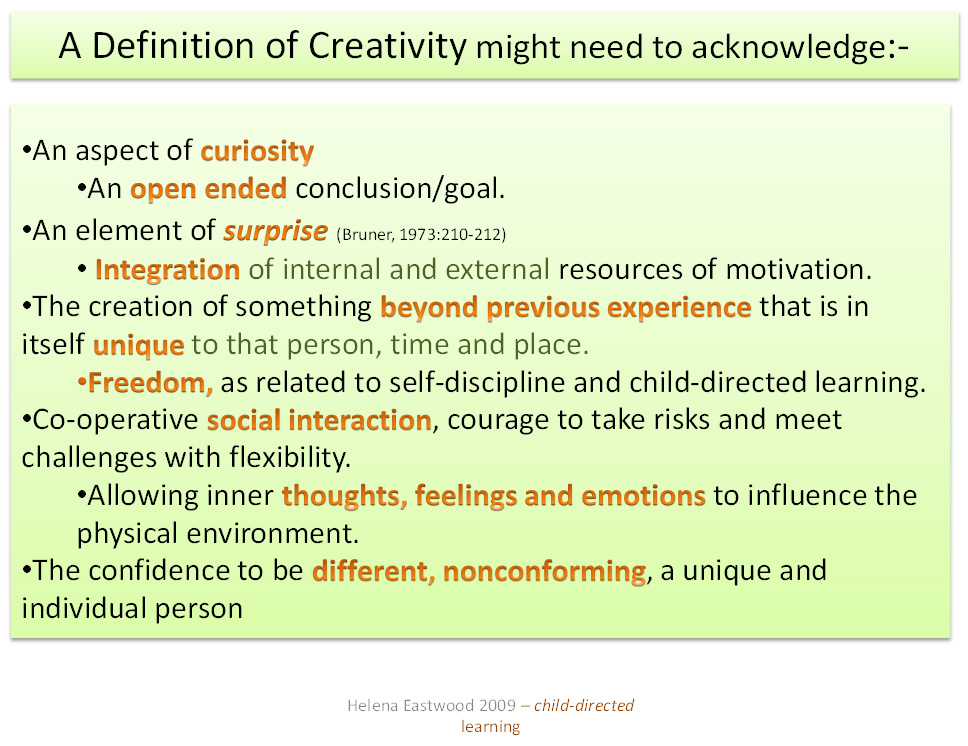
Demonstration illustrating creativity
The balloon represents the environment,
the air in the balloon represents the abstract creative element,
and the balloon’s responses represent a visible relationship of creativity.


| Creativity related to colour When.. ‘world content’ and ‘thought content’ unite, the inner personality is expressed through creative activity and joyful learning. (Steiner,1996a:70) |
| Like colour, musical tones – ‘the world of sound will enliven and deepen the life of soul’ the secrets of the individual tones, ‘ going through the tone of the soul’, which provides ‘a moral or spiritual quality’ of experience. (Steiner,1996a:87) |
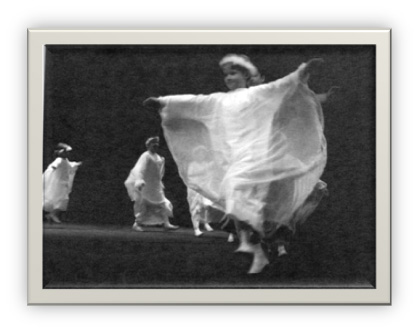
‘….when the soul element experiences colour it feels it of has come into movement.’ (Steiner,1996a:202)
When structural elements and musical elements unite they create a sense of integration and harmony, e.g. imagination, poetry, eurythmy, problem solving.
This diagram illustrates Creativity as a union of 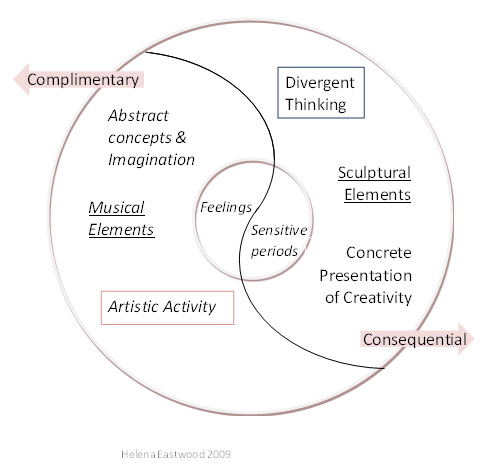
environmental activity with feelings. Uniting fantasy with reality and facilitating the embodiment of joy described as enjoyment
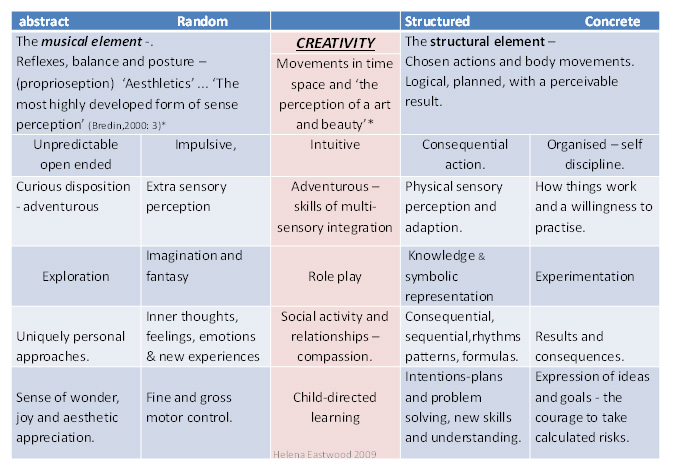
Supporting Children’s Creativity and Creative Thinking |
|
|
|
Creative teachingSimplify- MAKE IT BIGGER Outdoor activities -v- indoor activities e.g. at the stream of-v- indoor water play. maypole dancing –v- sewing and table top weaving activities. Make it slower…..- Badminton –v- tennis Prioritise focus on a specific aspect of the skill . e.g. Mix prime colours to make secondly colours using wet paper. Enrich the experience with diversity and/or a multisensory approach Enhance motivation –within the context of useful skills, the child’s interests and abilities (scaffolding), personality and disposition. Provide reflection and open ended questions i.e. Questioning the question; identify successful activity with appropriate positive feedback and encouragement. |
The High/Scope approach suggests adults may help the child develop a wider view and engagement with their situation by providing:-
(The Plan Do Review Process:High/Scope Press,1989. Supporting Children in Resolving Conflicts, Ypsilanti: High/Scope Press, 1998.) |
Using these techniques the adult:-
‘problem solving ability and creative endeavour’. (Bernard,1965: 93) |
Reflective Feedback
‘the practice of the Reflective Educative Facilitator would appear to offer unlimited potential for fostering and sustaining the imaginative life world of children.’ (Trotman,2004:24)
| Verbal representative feedback, describing with a simple and gentle commentary what the child is doing.vVisual representative feedback, an imitative form of sharing that witnesses the child as director and the respondent as a keen and genuine apprentice.
Child Directed Learning & Special time
‘his own best expert’ ,
|
Affirmation of success
|
Open Ended Questions
and Question the Question
Attitude is fundamentally important together with:-
|
Open ended questions of inquiry –can aid the child’s discovery and independence.
How do you feel? What has happened? Tell me about…..? How did you….? avoid overwhelming the child’s self-directed learning avoid neutralise any surprise elements within the child’s experiences of self-discovery. Question the question examples :
|
Creativity is like the wind:
- The affects can be seen and felt.
- It can be channelled to create a physical influence,
e.g. the flying kite or the wind turbine.
Yet, in itself it remains an un-definable representation of creative freedom.
The art of teaching is as colourful and as unique as each individual adult and child, and the moment by moment unfolding of each new opportunity.
The best teaching practice may need to include an ability to spot ‘the emergent beginnings’ of creativity (Bruce,2004:135) within play and learning and respond creatively with uniquely appropriate support and encouragement.
If creativity is an open ended exploration that invites us to move on – expand into new perspectives and boldly embrace new opportunities, any conclusion would be detrimental to the very nature of the subject ‘CREATIVITY’ So Be It
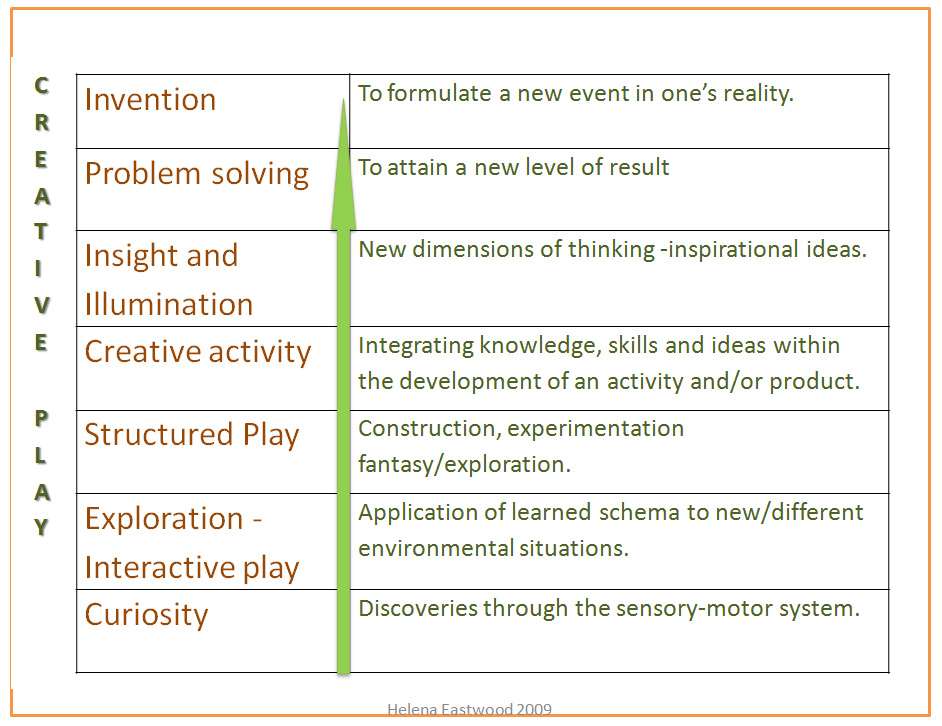
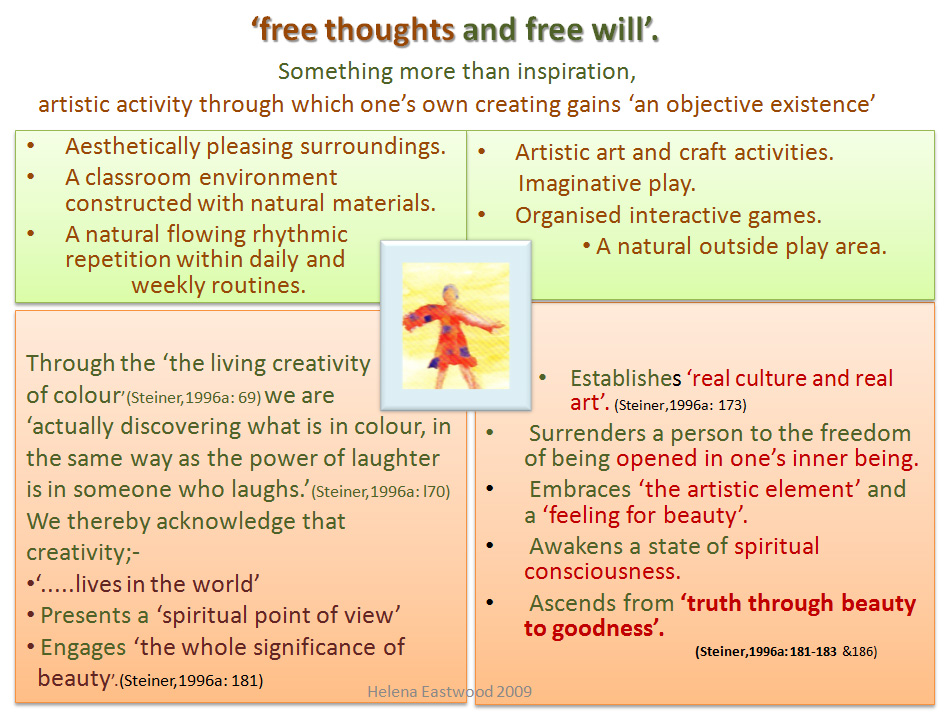


He walking went sad he on road with falling.
He was sad when he went for a walk down the road.
A walking went he,
Down the falling road of sadness.
He is being grumpy
Look the leaves are dancing.
The butterfly is fly’s anywhere

